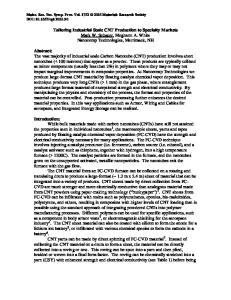Interface-assisted spintronics: Tailoring at the molecular scale
- PDF / 701,172 Bytes
- 6 Pages / 585 x 783 pts Page_size
- 68 Downloads / 317 Views
Organic spintronics: Toward interface study One of the first spintronic devices constructed using molecules was an organic spin-valve (OSV) consisting of a layered structure of two ferromagnetic (FM) electrodes separated by an organic spacer.1 Among the large set of small and polymer-based molecules, OSVs—using the electroluminescent material, Alq3,1,2 high mobility semiconductor rubrene,3–5 and π-conjugated polymers6—have been extensively studied to demonstrate the magnetoresistance (MR) effect, defined as the change in the resistance of the device with an applied magnetic field. The performance of these OSV devices depends on the efficiency of spin injection into, and spin transport throughout, the organic layer. Readers can find a detailed review on this topic in Reference 7. In most of these studies, it was observed that the experimental reports of MR do not convincingly support the phenomena of spin-conserved diffusive transport.8–10 Rather, the low hopping-like mobility in the organic layer and the soft, porous nature of the organic films, causing a reduced effective spacer thickness,1,7 suggested a significant contribution of spin-conserved tunneling to the MR response. Hence, reports of tunneling magnetoresistance (TMR) using thin films of organic molecules as tunnel barriers have gained wider acceptance and attention.11–13 The phenomenon of TMR is an extremely interface-sensitive process that depends on the value of spin polarization at the FM-molecule interface (P).14
To a first approximation, P can be represented by the normalized difference in the interface density of states (D) of the two electron-spin channels (↑- spin-up and ↓- spin-down) at a given energy (E) and can be expressed as (a detailed analysis of P may be found in References 14 and 15):
D (E ) − D (E ) ↑
P (E ) ≈
↓
D (E ) + D (E ) ↑
↓
.
The adsorption of organic molecules, a three-dimensional structural entity, on a magnetic surface to form a moleculesurface interface is a complex phenomenon. In 2009, using a combination of magnetotransport and inelastic tunneling spectroscopy measurements, Raman and co-authors4 showed that the values of P and TMR in a rubrene-based organic junction device depend on the molecular morphology and its associated interaction at the interface, strongly affecting the spin-dependent electronic coupling across the FM-rubrene interface.3,4 Such an understanding is in agreement with reports of differences in the sign and magnitude of TMR in vertical organic junction devices fabricated by different research groups.7,11–13 Subsequently, for the treatment of the organic-ferromagnet interface, Barraud and co-authors13 formulated a tunneling transport model to include the effects of bonding-specific spin-dependent interface electronic coupling on P. This was done by proposing the formation of spin-hybridizationinduced-polarized states at the interface (see the article by
Nicolae Atodiresei, Peter Grünberg Institut and Institute for Advanced Simulation, Forschungszentrum Jülich and JARA, Germany; [email protected]
Data Loading...











